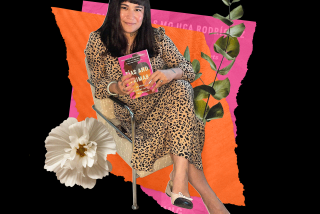Celebrating Differences, Challenging Stereotypes
- Share via
Maria Elena Gutierrez knows how it feels to be stereotyped, and the consequences when stereotyping leads to hate.
As a dark-skinned Latina growing up in Los Angeles, Gutierrez said she was often called a variety of ethnic slurs. Now a preschool director in Alameda, she said people still react to her appearance with animosity. The day after California’s Proposition 187 passed, she accidentally bumped into a stranger in the market. “He said, ‘I’m sure glad we’re going to get rid of your kind,’ ” Gutierrez recalled.
From her perspective, people are not only getting angrier, they are also passing their hate and fear to their children. “Believe it or not,” she said, “it starts about (age) 2 1/2. By age 5, they know all the stereotypes. . . . They’ve already picked up what their parents value and what they think is good or bad.”
In preschool, she’s seen children refuse to play with others whose eyes are shaped differently. Boys say girls are inferior. One child started to cry when touched by a teacher whose skin was a different color.
Hate crimes are growing in number. A new report by the Los Angeles County Office of Education shows that in public schools, hate crimes rose 53% between 1989 and 1992 to almost four a year per school. The most common targets were African Americans and Latinos, the most typical method a racial slur or graffiti. About a quarter of the incidents resulted in physical violence against a student.
The report blamed a combination of events--changing demographics in Los Angeles County, the economic recession, the Persian Gulf War and the Rodney King beating.
According to what might be called the tribal explanation for stereotyping, people claim their clan’s image as their own to gain a sense of belonging or to give them tools to deal with the anxiety of the unknown. People learn stereotypes unconsciously as part of their childhood socialization but also consciously as they adapt to the world.
Ideally, people modify their stereotypes as they mature and become more educated. But often in times of perceived assault, the traits ascribed to outsiders to produce tribal solidarity don’t fit reality. Once stereotypical beliefs solidify into hard-core hatred, education and exposure can do little more than create a fragile crust of social sensitivity, mental health professionals say.
The psychological explanation holds that it begins when children believe they have to wall off or repress the traits, feelings and desires that do not fit their image of who they should be, according to the Institute for Mental Health Initiatives in its Dialogue newsletter. The more they reject despised traits they fear lie within--such as being dirty, lazy, promiscuous or violent--the more they see them exclusively in outsiders, and the more the hated group is demonized.
The mental health professionals suggest adults help children tolerate rather than disown a broad range of emotions in themselves and others. It helps to expose children to people who are different from themselves but share a common goal.
Rather than teaching “color blindness” at her school, Gutierrez embraces and celebrates differences. When a child doesn’t want to play with, say, Roy because his eyes are different, she might respond, “Roy is Asian Pacific. What do you think his eyes are going to do to you?” Or, “You’ve played with Roy before. What’s the problem?”
When a child makes fun of another child for using a wheelchair, she said she tells the child: “She just can’t walk. She can use her arms, she can use her mind. She has feelings. . . .
“You have to provide an environment where kids can ask about differences,” she said. No matter whether it is race, gender, weight or disability, Gutierrez asks her teachers to acknowledge the difference and deal with it.
It takes time, effort and adults like Gutierrez, who know they have to fight their own biases constantly.
“A lot of times, parents say, ‘I didn’t teach them that,’ ” she said. “My response is, your children don’t live in a vacuum. How do you react to differences yourself?
“What are you watching on TV? Have you ever considered buying books that deal with differences? Do you put pictures of anybody other than white kids on the walls in your house? Who comes to your home? Who has dinner with you?
“People believe kids aren’t listening. But they know who their parents like and who they blame.”
More to Read
Sign up for Essential California
The most important California stories and recommendations in your inbox every morning.
You may occasionally receive promotional content from the Los Angeles Times.













